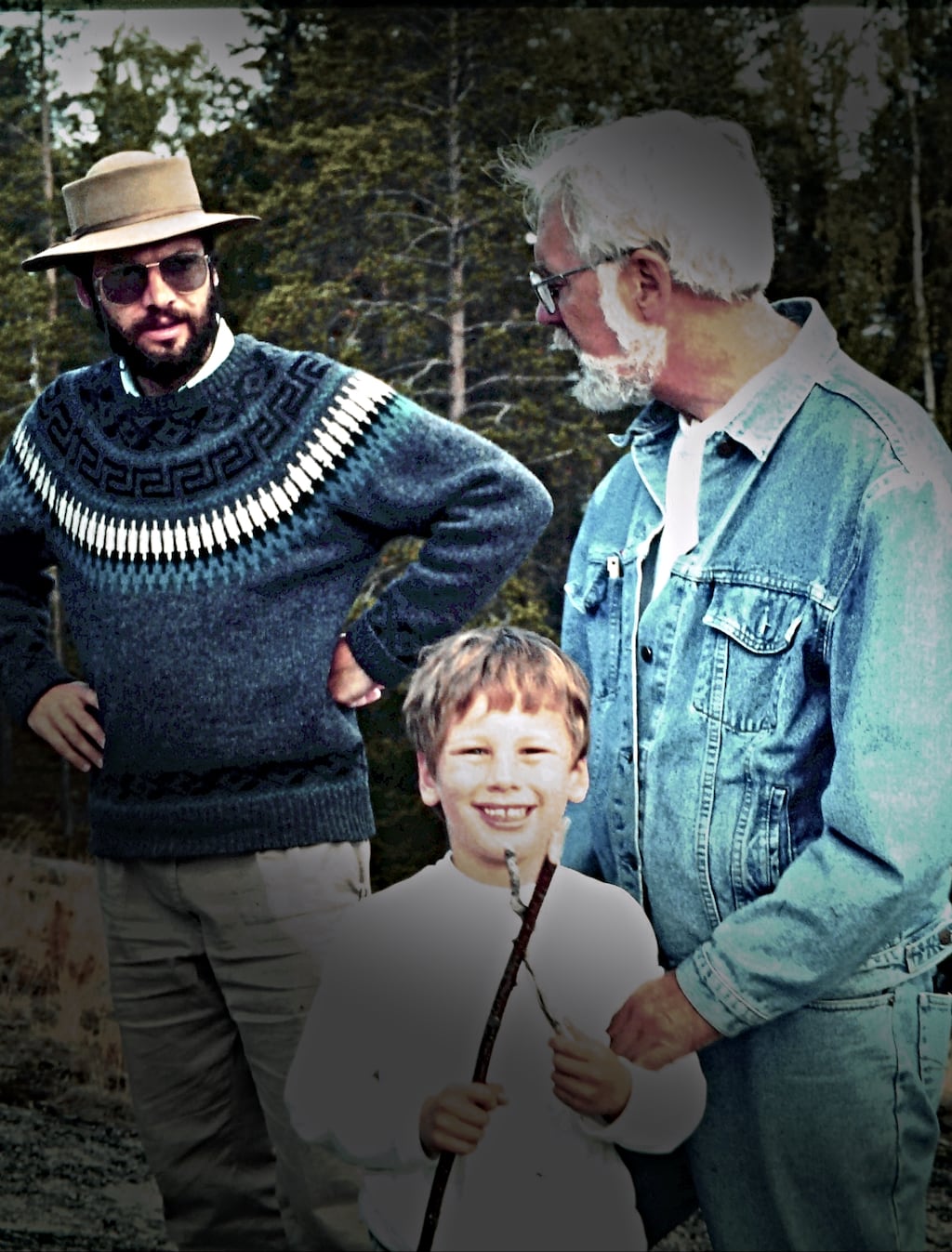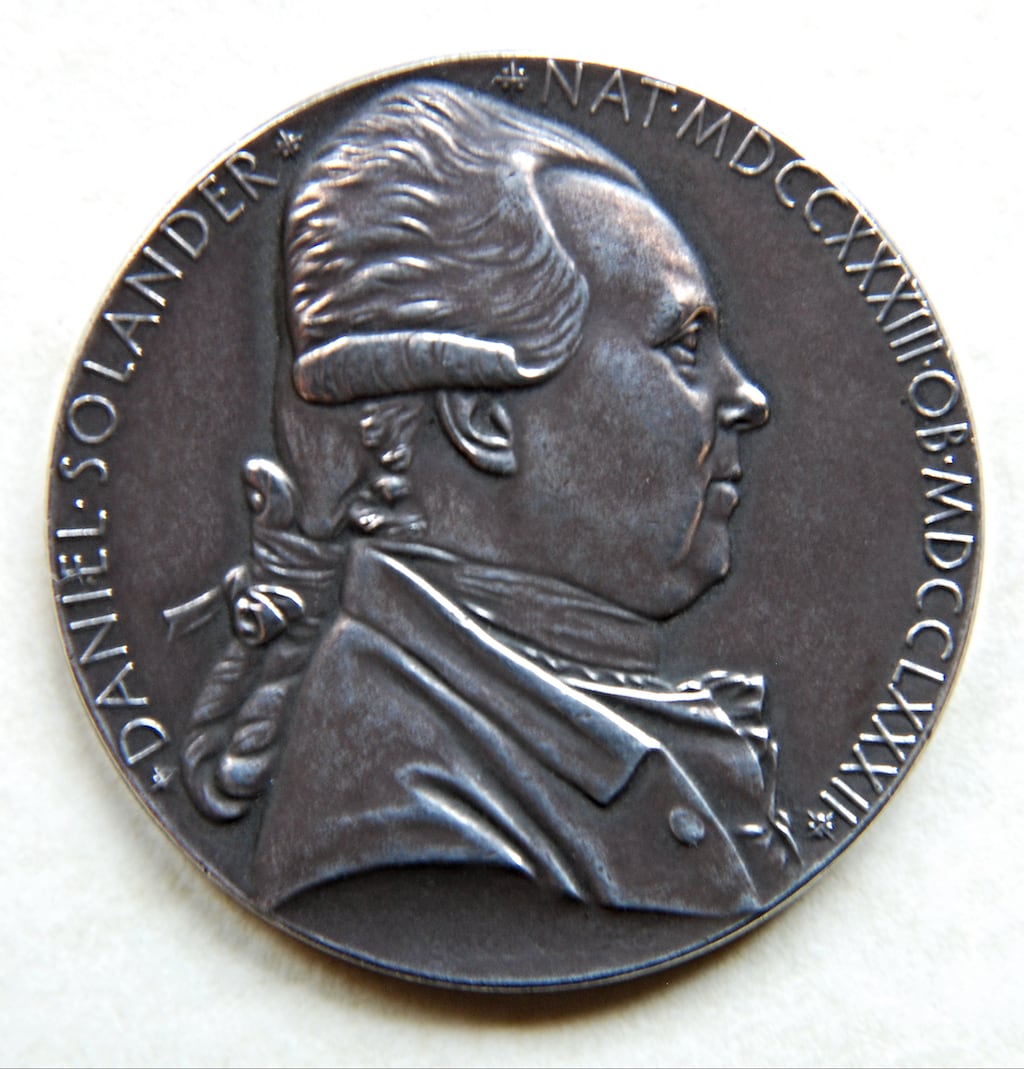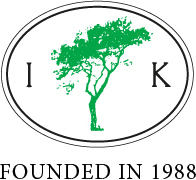I was eleven years old when my parents gave me a book by Walter Shepherd entitled Great Pioneers of Science (London, 1964). It contained short biographies of scientists from Pythagoras to Jonas Salk. One of these short biographies was of Carl Linnaeus and for the first time I read about the origins of modern taxonomy. A few years later, when commemorations began for the bicentenary of the Endeavour voyage (1768–1771), I was surprised to learn that Linnaeus’ favourite student, Daniel Solander, had accompanied James Cook and Joseph Banks on this profoundly important scientific expedition.
Many of my books have sought to counter the anglo-centrism of Australian history. The year before my book
The Dutch in Australia (1987) was published, Olavi Koivukangus and my friend John Martin published
The Scandinavians in Australia (1986). In it they mentioned Solander and included his portrait. My interest in the first Swede to circle the globe began to grow. So much so, that, in 1991, I decided to apply for a fellowship from the Australia Council to research and write Solander’s biography. Unfortunately, pessimism about my chances precipitated a very early mid-life crisis. I was thirty-six years old, married with two young boys. Although I had already authored (or co-authored) a total of eight books, three were still unpublished. There was an economic recession in 1991 and publishers were markedly more cautious. What was the point of expending so much time and effort writing books that no one (seemingly) wanted to publish? How could I contribute equally to the support of my family under such circumstances? I began to consider a career as a teacher or a librarian.
At that time, I had no honorary university affiliation. I relied heavily on my local shire library for inter-library loans – which I had to pay for. I had already requested many books and articles to ground myself in what was known of Solander’s life and plan my research overseas. In my despondent state, I rang the library to cancel my requests. My wife Susan became concerned and informed her mother, Betty Wade. Now, if your mother-in-law thought you were a parasite, your life as a writer might truly be hell. Mine, however, had always been enormously supportive. She bought me my very first electric typewriter and encouraged me to embark on a career as a full-time writer. She had already accompanied me during research trips for two of my books and was usually the first to read my draft chapters. When she spoke to me of the social worth of historians and the value of a biography of Solander, I inevitably had second thoughts. Another guardian angel, Jeremy Spencer, also intervened. Originally from New Zealand, he was working with the Australian Protective Service in Canberra, guarding politicians, dignitaries and diplomats, when he first began to correspond with me on subjects of mutual interest. With an encyclopaedic knowledge of Pacific exploration, Jeremy told me that if I wrote a biography of Solander I would be a pioneer. He urged me not to abandon the project. I agreed to refocus, but I also became aware of a potential competitor. This was Per Tingbrand, a lawyer who lived in Solander’s birthplace Piteå on the Gulf of Bothnia. In 1983, to coincide with the 250th anniversary of Solander’s birth, Per had co-edited an anthology of essays about his famous compatriot. I worried that I might end up treading on his toes; so, I telephoned him to discuss the matter. The man who answered my call had difficulty speaking. He soon revealed that he had only recently suffered a devastating cerebral haemorrhage which had left him with epilepsy, impaired speech and memory loss. My own mid-life crisis seemed trivial. Per informed me that writing a detailed survey of Solander’s life was now physically beyond him. Nevertheless, he was delighted that someone else wanted to write such a biography and offered me whatever assistance he could.
My resolve strengthened, I rang Sutherland Shire Library to ‘un-cancel’ my inter-library loan requests. Not long after, I learnt that I had been awarded a Category A Fellowship by the Australia Council for my project. Thankfully, I had not cancelled the application! In due course, my three unpublished books were also published. Indeed, one was even optioned by a film company that same year. There is something to be said for persistence!
Susan and I made plans to rent an apartment in London so that I could do seven-weeks’ research among Solander’s manuscripts at the British Library, the Natural History Museum, the Linnean Society and other repositories. We made our way to Europe via Solander’s landfalls in New Zealand and Tahiti, with an additional stopover in Los Angeles. Our sons did not go to school for seven and a half months, but we nevertheless gave them daily mathematics and English lessons. We also insisted that they write a daily journal. Because we returned home via Singapore, they also became circumnavigators. My mother-in-law also joined us for part of this adventure and celebrated her 70th birthday with us in London. Together we travelled north to retrace Solander’s footsteps in the Hebrides, Orkney and Iceland in 1772. (Iceland is about to celebrate the 250th anniversary of his visit.) Then we crossed the North Sea to Denmark and drove to Sweden so that I could begin intensive research in local archives and libraries.
In July 1992, I finally met Per Tingbrand in Solander’s birthplace Piteå. He kindly arranged accommodation for my whole family in a vacant school-master’s house and, in his now unused legal chambers, let me photocopy whatever I wished from his Solander files.

Me (left) with my youngest son Pierre (centre) and Per Tingbrand (right), Piteå, Norbotten, July 1992.
For the biography, I knew that I had to gather all Solander’s known correspondence, but accurate translation of the Swedish letters inevitably presented me with a serious linguistic challenge. I thought that Per might want to be involved in this task and suggested to him that we co-edit Solander’s correspondence for publication in a separate volume. I made this proposal after first discussing the project with Per’s patient wife Ulla-Britt. She thought that he would be impossible to live with, if he did not have such a project to occupy him.
Over the next four years, Per and I gathered and edited copies of Solander’s correspondence, from libraries and archives all over the world. The earliest surviving letter that we found was preserved in the collection of the Royal Swedish Academy of Sciences. It dates from February 1753 and was written by Solander to the physician Johan Gustaf Hallman, apparently when he [Hallman] was still in Padua. It may seem like a contradiction in terms to state that one needs to know what a text is about before one can fully translate it, but this is so often the case. For weeks, Per and I were unable to transcribe, let alone translate, one phrase in the letter. During a two-week period, we looked at the two words with our respective magnifying glasses, again and again, without recognition. Then suddenly, as if a veil was lifted, I read the words
acarus subcutaneous and immediately realized that here was a reference to the itch mite
Sarcoptes scabei, the cause of the skin disease scabies. A whole chunk of the letter suddenly made sense.
Around the time that Solander wrote his letter of 1753 to Johan Gustaf Hallman, he assisted Linnaeus in cataloguing the royal collections at Ulriksdal and Drottningholm. In the summer of the same year he returned to Piteå and followed the Piteå River upstream, before crossing the mountains into Norway. Historians often work with unusual clues (aside from manuscripts and printed works) and it is from botanical specimens in the Natural History Museum in Stockholm, that we know that Solander reached Rørstad (as Linnaeus had done two decades before) on the North Atlantic coast. And in 1755 he also made a pioneering botanical expedition up the Torne River to Lake Torneträsk. Retracing these travels with my family in 1992, I realized that Solander could not have been the effete dilettante that some have painted him. Nor was he unfamiliar with the sea, for several times he must have sailed the length and breadth of the unpredictable Gulf of Bothnia during these years.
After requests made by British naturalists, including Peter Collinson and John Ellis, to send someone who could give instruction in Linnean methods, Solander arrived in England in July 1760. As Linnaeus had done a quarter of a century before, Solander went immediately to the Swedish Church in London. When I followed his trail there, I was surprised by the frosty reception I received. It was only after I insisted that my interest was in eighteenth-century rather than nineteenth-century records, that the mood changed. The parish secretary was convinced that I was working on Jack the Ripper! I was stunned, until she explained that one of the Ripper’s victims was a Swedish prostitute named Elizabeth ‘Long Liz’ Stride and that over the years she had been pestered by a succession of Ripperologists.
Although Per Tingbrand took on the task of translating the Swedish letters, we did make some rigorous comparisons with previous unpublished translations by the remarkable English scholar Anna Gurney (1795–1857), now held by the Linnean Society in London. We also benefited from transcriptions of Solander’s correspondence to his friend and colleague Joseph Banks, undertaken by Mary and Hannah Turner, between 1833 and 1845. (Their father, Dawson Turner (1775–1858), never fulfilled his ambition to write a biography of Banks.) In our division of labour, I assumed responsibility for deciphering the embedded names of authors, books, and plant and animal species, in virtually all Solander’s correspondence, regardless of whether the letters were in English, Swedish, Danish, Latin or German. Without doing this, it was frequently impossible for us to make sense of a text. One letter that we found in the Uppsala University Library, was written in Latin and addressed to the great Swiss polymath Albrecht von Haller in December 1760. Both Per and I had studied some Latin at school, but even with the help of more experienced classical scholars the letter stubbornly resisted clear translation. The introductory first page was missing and the remaining sheets were full of abbreviations, page numbers and a puzzling mélange of botanical and seemingly entomological terms like
insectifera, arachnoideas, muscas, araneas, scarabaeus. It was only after consulting the first edition of Linnaeus’s
Species plantarum (1753), that the code was broken. Solander was discussing orchids whose specific epithets often allude to spidery and insect-like flowers.

Press clippings, Piteå Tidningen, 1992.
In England, Solander continued to make important and influential friends one of whom was Benjamin Franklin. Our first hint of this was a letter that the Quaker naturalist Peter Collinson wrote to Solander in October 1767. Unfortunately, for a time, the location and full text of this letter was a mystery. Per had noted the existence of Collinson’s letter to Solander in a working calendar of correspondence, but, after his stroke, he simply could not remember (or find his note for) its repository. Shortly before we were obliged to hand our completed work to our publisher Melbourne University Press, he suddenly remembered that it was among Benjamin Franklin’s papers in the American Philosophical Society’s collection in Philadelphia. Desperate to offer our readers a comprehensive collection of Solander’s surviving correspondence, I sent an urgent fax to Philadelphia explaining our project and our looming deadline, but was very disappointed to learn that the letter could not be found. Then the librarian remembered that there was a photostat, dating from the 1950s, in the Franklin Collection at Yale University Library. It is hard for me to describe the surreal pleasure and relief that I felt on receiving that eighteenth-century letter from Yale the following morning: it is not often that one receives a fax from someone who has been dead for two and a half centuries telling you that Benjamin Franklin is coming for the weekend.
The results of our scholarly collaboration,
Daniel Solander: Collected Correspondence 1753–1782, was published in 1995 by the Miegunyah Press (an imprint of Melbourne University Press) and Scandinavian University Press in Oslo. It remains in print, albeit in paperback, as does my biography of Solander,
Nature’s Argonaut, first published by Melbourne University Press in 1998 and dedicated to Per.
One of my great surprises when researching Solander’s life was discovering that while he worked at the British Museum he led a double-life as a Swedish agent. There was an element of serendipity in discovering this fact. I was very curious how Britian could be at war with France and allied to Prussia, yet continue to buy iron ore from Sweden, which was at war with Prussia and allied to France. A study of the diplomatic canvas of the period led me to the
Calendar of Home Office Papers during the Seven Years’ War (published in 1878 and of which Flinders University has the only library copy in Australia) and then to the papers of the pioneering industrialist of the age of steam, Matthew Boulton, in Birmingham. Espionage has long been an adjunct of normal academic, diplomatic and commercial activity – and I speak as a former intelligence officer. In Solander’s case there is circumstantial evidence that he collected industrial and perhaps even military intelligence in Britain during two tours of southern England. He clearly took a special interest in glass making in Bristol, metal working in Woodstock and naval movements in Portsmouth. However, there is much firmer evidence that he assisted the Swedish industrialist and merchant Clas Alströmer and his brother Johan, in illegal attempts to recruit skilled British artisans to Swedish industry. On the orders of the Secretary of State, Solander was put under surveillance and his mail was intercepted. Thus, in 1765 we know that he wrote at least four letters to Matthew Boulton, attempting to lure him to Sweden. One can only speculate on the course the Industrial Revolution might have taken had Boulton gone to Sweden rather than partnered James Watt.
Within a few years of becoming Assistant Keeper at the British Museum, Solander made England his permanent home. In refusing the chair of botany in St Petersburg, he offended Linnaeus who appears to have had plans for him to succeed him in Uppsala. Solander’s brazen independence may also have cost him the hand in marriage of Linnaeus’ daughter. By the time Solander departed on the
Endeavour in 1768, there is no doubt that he and Linnaeus were estranged.

Solander medal by Erik Lindberg (1873–1966), Kungliga Vetenskapsakademien (Royal Swedish Academy of Sciences), 1940.
If Solander kept a journal during the
Endeavour voyage it has not survived, but he did write letters from Madeira and Rio de Janeiro which give him a voice in recounting aspects of the expedition. Solander’s rather earthy ‘Tahitian vocabulary’ and his ‘Observationes de Tahiti’ (preserved at the School of Oriental and African Studies, in London) also offer other insights to his experiences on the island. Furthermore, we have some of his oral history of the voyage which Charles Blagden noted from conversations with Solander, shortly before his death. Today, these notes are preserved in the Yale University Library. Solander’s botanical and zoological manuscripts, preserved in the Natural History Museum, London – are also rich in detail and contain valuable evidence of the landfalls he explored. Of course, both Banks and Cook frequently mentioned Solander and his adventures in their respective journals.
In May 1782, when he was only forty-nine years of age, Solander died suddenly of a stroke and was buried in the Swedish Church in London, next to the philosopher Emmanuel Swedenborg. In 1913, just before the original church was demolished, his remains were moved to Brookwood Cemetery. Poor Swedenborg was sent back to Sweden for interment in Upsala Cathedral (where Linnaeus also lies), but, alas, with the wrong head! Although Solander left a large number of manuscripts, his reputation suffered because his work was not published and because of unfair accusations of laziness. In 1992, I was shocked, when reading a copy of Hooker's edition of Banks'
Endeavour journal in London, to see it besmirched with savage graffiti: ‘Solander was a parasite–he lived on and with Banks practically all his life in England. What did he give the world? P. C.’ The margins of such a book deserve better treatment, but I was glad to see that the feisty New Zealand-born scholar Averil Lysaght had responded in pencil: ‘Fools rush in where angels fear to tread. The slanderer has not even signed his name!’
Solander was the first taxonomist to describe and catalogue the natural history collection of the British Museum. He was an extraordinarily observant naturalist, recognizing both unique characteristics in species and generic affinities in far-flung corners of the globe. He catalogued the collection of Joseph Banks. He assisted William Aiton with plant classifications for Kew Gardens. He catalogued the Duchess of Portland's enormous natural history collection. He helped revise Alexander Russell's
Natural History of Aleppo, and contributed to John Ellis'
Natural History of Zoophytes. He assisted most of the leading British naturalists of his day and had a pivotal role in introducing the Linnean system. Although the Florilegium was abandoned and Solander's name is not now formally associated with most of the plants he collected, his specimens and detailed descriptions were used by many other naturalists. Ultimately, there is little doubt that Daniel Solander was well liked. The novelist Fanny Burney, fondly deemed him a ‘philosophical gossip’ and James Boswell declared: ‘Throw him where you will, he swims’.











 LEARN MORE
LEARN MORE